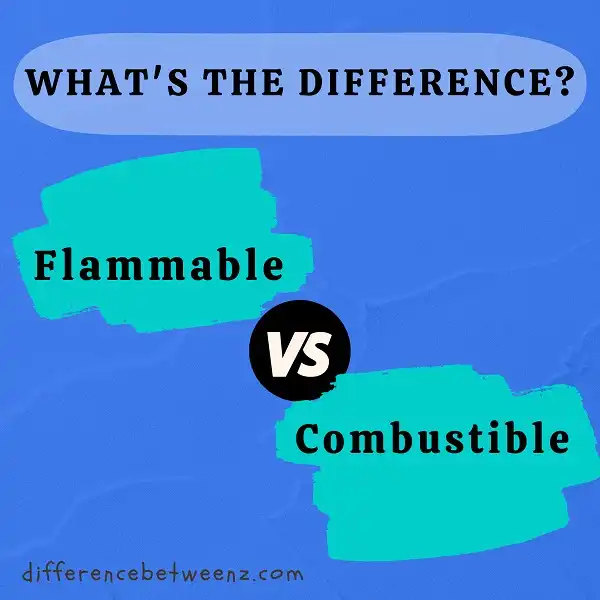Flammable and combustible are two words that are often confused with each other. While they have some similarities, there is a big difference between flammable and combustible. In this blog post, we will discuss the difference between flammable and combustible, as well as provide some examples of each.
What is Flammable?
Flammable materials are those that can catch fire and burn easily. Many everyday items are flammable, including paper, wood, cloth, and some plastics. Flammability is determined by a material’s ability to ignite, how quickly it burns, and how hot it burns. Some materials, like metal, are not flammable because they cannot be ignited. However, even non-flammable materials can be a fire hazard if they are heated to a high enough temperature. For example, iron will glow red and then white when it becomes hot enough to support combustion. Similarly, the glass will soften and then melt when exposed to intense heat. In short, any material has the potential to be a fire hazard if it is heated to a high enough temperature.
What is Combustible?
Combustible refers to any material that can catch fire and continue to burn. This can include solid, liquid, or gaseous materials. Generally, combustible materials are made of carbon-based molecules, which are able to readily react with oxygen in the presence of heat or a spark. Once combustion begins, it will continue until all of the combustible material has been consumed or the oxygen supply has been cut off. Combustible materials are often used as fuel for fires, and they can be found in many everyday items, such as wood, gasoline, and natural gas. While some combustible materials are safe to use, others can be highly flammable and pose a serious fire hazard.
Difference between Flammable and Combustible
Flammable and combustible liquids are often confused because they both can catch on fire. The major difference between the two is that flammable liquids will ignite at a much lower temperature than combustible liquids. This means that flammable liquids are much more dangerous because they can easily be set on fire. Combustible liquids, on the other hand, require a higher ignition temperature, so they are not as dangerous. However, both types of liquids can be extremely dangerous if they are not handled properly. It is important to always follow safety precautions when working with any type of flammable or combustible liquid.
Conclusion
In conclusion, flammable liquids ignite and burn easily, whereas combustible liquids have a higher ignition temperature. It is important to understand the difference between these two terms when working with hazardous materials, as they can pose different risks depending on their classification.


